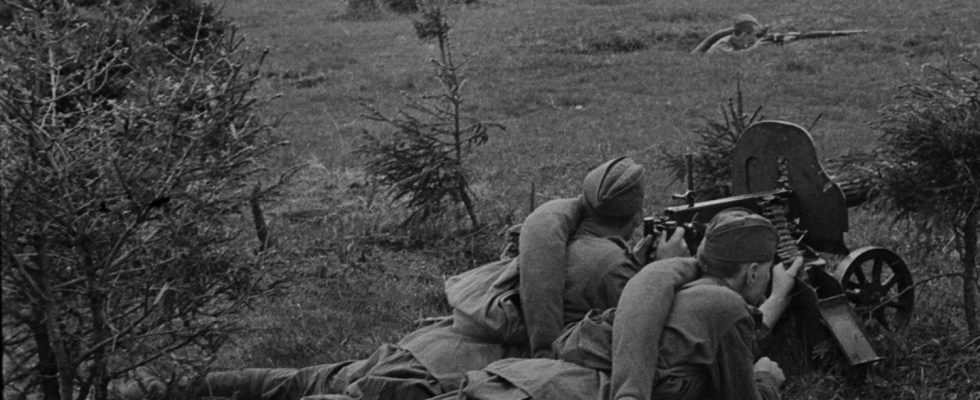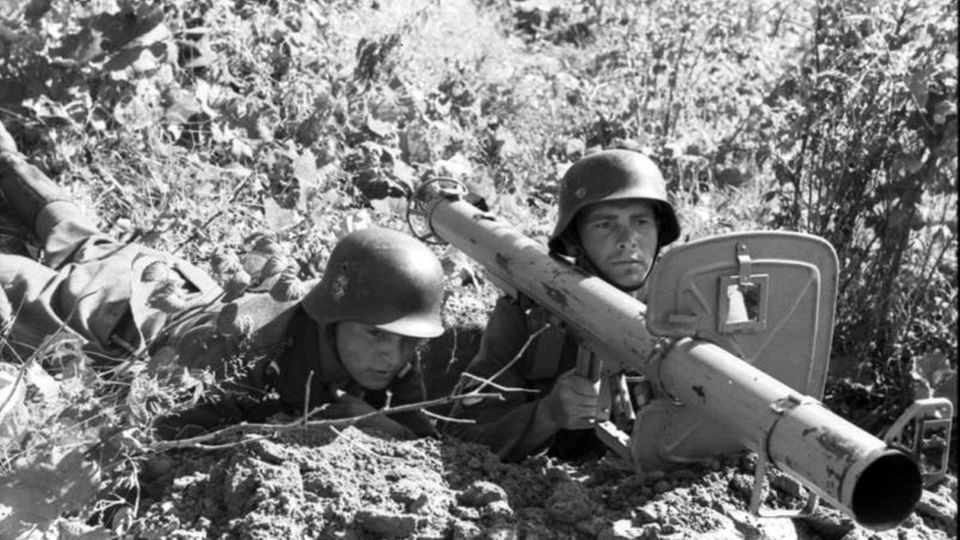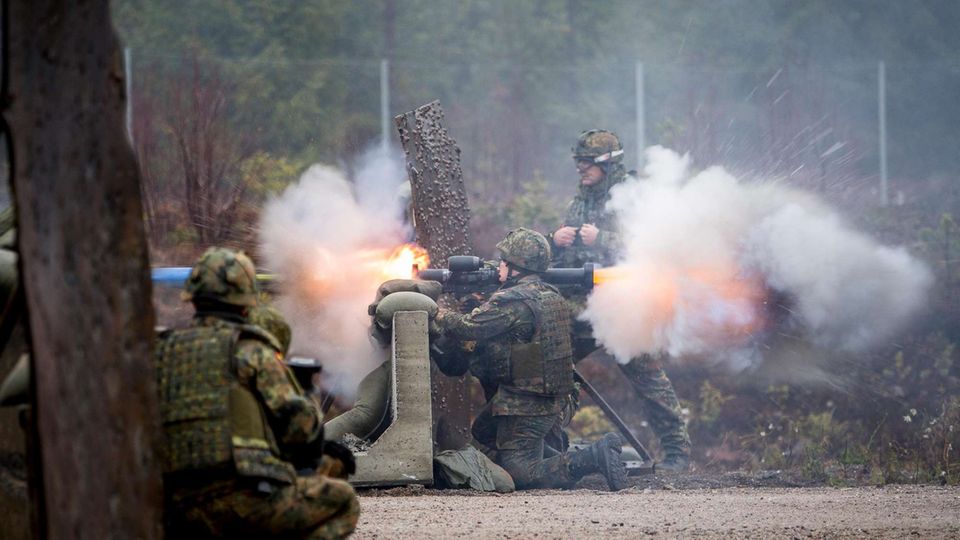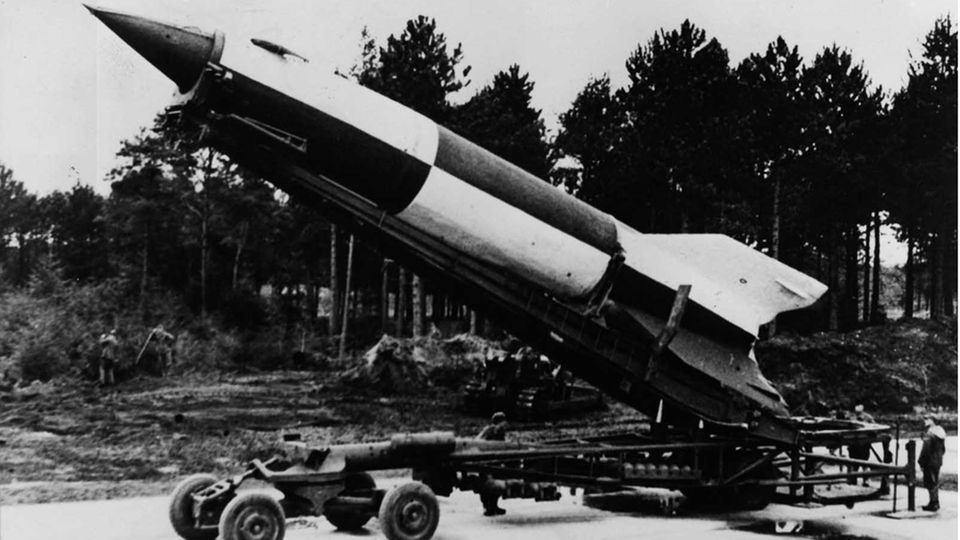War in Ukraine
Maxim MG – why the weapon from the First World War is still used
PM 1910 in World War II
© Commons
The machine gun that Hiram Maxim invented was the most terrible weapon of the First World War. In Ukraine, the Russian variant of the ancient but efficient killing machine, the PM 1910, is used by both sides.
Hiram Maxim was a restless inventor, when he died in 1916 he owned over 200 patents. But one invention towered above all others: Maxim had brought the machine gun into the world. Legend has it that at an exhibition about electricity a man gave him advice. If he wanted to become very rich, all he had to do was invent a device that would allow people in Europe to kill themselves more efficiently. That was 1880.
Whether it’s a serious tip or just a cynical comment. Maxim accepted the big task and got to work. Rapid-fire weapons had already existed before; they were used in the Franco-Prussian War of 1870/71. But these mitrailleuses had a disadvantage. They had several barrels and each one had to be loaded by hand – after one shot the device was empty. In other multi-shooters such as revolvers and repeating rifles, the ammunition was fed mechanically from the magazine by shooters.
Machine gun: Hiram Maxim developed the first self-loader
Maxim’s rifle, on the other hand, was self-feeding, using the “shake” of recoil that occurred when a cartridge exploded. This shock was redirected and ejected the spent case from the chamber, inserted the next one and then also released the firing pin for the next shot. This marked the invention of the first self-loader that also allowed a high rate of fire. Nobody had to turn a crank anymore, as with other designs.
The ammunition was fed via belts. The Maxim MG achieved a firing rate of 500 rounds per minute. Compared to later light machine guns such as the MG 42 – Hitler’s saw – with 1,500 rounds, this seems small. But in 1885 it was an enormous amount and more than enough for Maxim’s task. Originally the Maxim was very large. It was placed like a gun on a carriage with large wheels so that it could be pulled by a horse-drawn cart. Six men were assigned to a machine gun.
First missions in the colonial wars
The Maxim was born in a time between the great wars. The American Civil Wars, the Franco-Prussian War and the Italian Wars of Unification were over and the next big war was still some time away. In the meantime, the colonial states massacred the locals with the new weapon. Wars that no one in Europe likes to talk about today.
No weapon defined the First World War as much as Maxim’s machine gun and its variants. Hundreds of thousands of men rushed into machine gun fire and were mowed down. The German “08/15”, the British Vickers and the Russian PM 1910 are all improved versions of the Maxim. In particular, the carriage shrank; the machine gun was usually mounted on a small tripod so that you could shoot from cover. The design of a mechanical self-loader remained the same as did the water cooling of the barrel. Maxim had already installed a water cooler around the actual barrel, which absorbed the heat from the explosions and prevented the barrel from burning out. This allowed the Maxim and its replicas to fire for a relatively long time without overheating. Especially if additional cooling water was added. Urine was also used in a pinch.
Russians put the machine gun on a cart
The British Vickers model was built until 1968. The Russian-Soviet PM 1910 is used in the Ukraine War today; it was built until 1950. However, both models have one disadvantage: they are heavy and unwieldy machine guns and yet only use standard rifle cartridges. Future developments took two different paths. Lighter weapons that an infantryman could carry for longer periods of time. Or heavy machine guns that also used larger calibers. The PM 1910 differs externally from the other variants. It is mounted on a small two-wheeled cart. In addition, it has a heavy metal shield that protects the operation. It looks like a miniature World War II anti-tank gun. The cart design offers two advantages. The PM 1910 could be hung behind the Russians’ panje wagons and then rumbled along behind them. The frame and shield made the PM 1910 very heavy, but it could be pulled and did not have to be carried. It is and was not very suitable for mobile infantry groups.
The PM 1910 has a robust construction
In Ukraine the PM 1910 is used by both sides. On the ground to defend fortified positions. Kiev uses a special variant to defend against drones. The PM 1910 was built as a quadruple anti-aircraft machine gun during the Second World War. In the USSR, weapons that were decommissioned were often not destroyed, but were usually stored. This is how Ukraine has a stockpile of over 30,000 of the old machine guns. In addition to heavy anti-tank rifles, the PM 1910 is the only weapon from the Second World War and before that is used in large numbers.
Because of the water cooling, the PM 1910 looks particularly old-fashioned. But old doesn’t have to mean bad. The heavy machine gun of the US armed forces, the Browning M2, was developed as early as 1918. The mortars commonly used today with a caliber of up to 120 millimeters are based on models from the First World War. Despite its unwieldiness, the PM 1910 has some lasting advantages. The device requires little maintenance and never fails. Because of the reduced firing rate and water cooling, it can also be used by untrained shooters, who would overheat a modern light machine gun.





